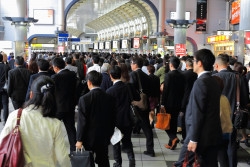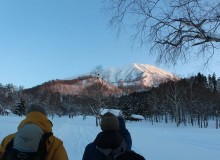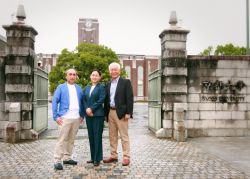
Originally published on metropolis.co.jp on June 2011


On the roof of New Sky Building #3 shortly after its construction. Courtesy Takeshi Sato

New Sky Building #5. Courtesy Takeshi Sato

One of Watanabe's last competition designs, a mixed-use urban center in Hong Kong (1982). Courtesy Takeshi Sato

A scale model of Watanabe's entry for the Pompidou Centre competition (1971). Courtesy Takeshi Sato

Nephew Takeshi Sato displays original drawings from Watanabe’s 1976 competition design for the UAE Development Bank and International Hotel
“It hurts to say, but it’s good he died when he did. His career was at a standstill; he’d made a lot of enemies,” Watanabe’s friend and former colleague Yoshinori Mori says.
In May of that year, Watanabe lectured at Montana State University and glimpsed a renaissance for his work abroad, where his reputation had yet to follow. “When I built the Gunkan,” the former naval officer told a packed house, referring to his battleship-inspired New Sky Building #3, the high-water mark of his career, “I aimed its guns at America.”
Tiger, meet stripes.
His death six months later began an improbable afterlife in which his obscurity has been exceeded only by his buildings’ longevity. To date, nothing of substance has been written about Watanabe in English. In Japanese, he has been consigned to a long list of modernist also-rans. But thirty years have witnessed the demolition of his better-remembered rivals’ seminal works, while his have demonstrated remarkable resilience, culminating in the unlikely restoration of New Sky Building #3.
Wresting Watanabe’s story from three decades of obscurity required canvassing every block of Hirakawa-cho and chasing flimsy leads across three prefectures. It was worth it. His hidden legacy brims with evidence of authentic genius. It also presents a man who believed brilliance without iconoclasm was a sell-out. “From a standpoint outside common sense, the elements of conservatism, hypocrisy, imitation, cowardice, opportunism, irresponsibility, and compromise inherent in common sense are clearly visible,” he wrote. “I am uninterested in architecture that lacks uncomplicated creativity and the temper to do battle with the universe.”
Watanabe ceaselessly antagonized complacency at the cost of a life he could have otherwise lived prosperously, but those battles were minor affairs for him. He was trying to win the war for immortality.
When he enrolled in trade school against his father’s wishes, Watanabe became the first in a family of carpenters to receive a higher education. By architectural standards, however, he was a self-taught outsider. It was a role he embraced, even after accepting an invitation to work in Waseda University’s school of architecture from Takamasa Yoshizaka, a lifetime academic from a prestigious family—and one of Japan’s foremost modernist architects. Despite their opposing backgrounds, Yoshizaka became Watanabe’s lifelong friend and mentor.
To Watanabe, academia was a bureaucratization of creativity, its discourse a self-indulgent vivisection. None were spared the force of that opinion. The sight of him in mid-tirade—overturning a table cluttered with his colleagues’ documents or flinging a chair across a crowded room—soon ceased to raise eyebrows.
From the few colleagues he trusted, he welcomed reciprocal confrontation. “He was always open to debate. He was intellectually curious. Really open-minded, pure-hearted. Guileless,” says Mori. “It was the politics he hated, anything that had the scent of cynicism.”
Watanabe was putting together a body of work that justified his self-righteousness. Today, the few living architects who remember his work regard him as the greatest competition architect Japan ever produced. He entered competitions relentlessly, every entry a superhuman effort, and he often showed up at rivals’ offices weeks ahead of a deadline to intimidate them with his meticulous designs, already completed.
“They weren’t building designs,” Mori says. “They were works of art. They defied every limitation of the medium.”
Judges anticipated Watanabe’s audacious entries and sought them out as soon as they convened. The outcome was predictable: he accumulated prizes, but never won outright. Committees award top honors by consensus, and Watanabe’s work was provocative, never mollifying.
He also foreran many of modernist Japanese architecture’s most significant innovations. His experimentation with prefabricated building components (capsule apartments among them) predates the Metabolist movement thanks to the line connecting Watanabe to Le Corbusier, by way of Yoshizaka.
Though he maintained a relationship of mutual admiration with their father figure, Kenzo Tange, Watanabe neither wanted nor claimed any affiliation with the Metabolists, who later made capsulization a crossover success. He felt theirs was an intellectual and academic movement, a distraction from architecture. In hindsight, he was prescient. That a form first applied by Yoshizaka and Watanabe is now identified with architects who later adorned it with mysticism passes troubling comment on the politics of architecture.
But Metabolist architecture hasn’t shown much durability. Somewhere in a Hachioji cemetery, Watanabe has probably stopped spinning long enough to savor the irony of his buildings outliving the better-known structures into whose shadows they once disappeared. Continues on page 2.







